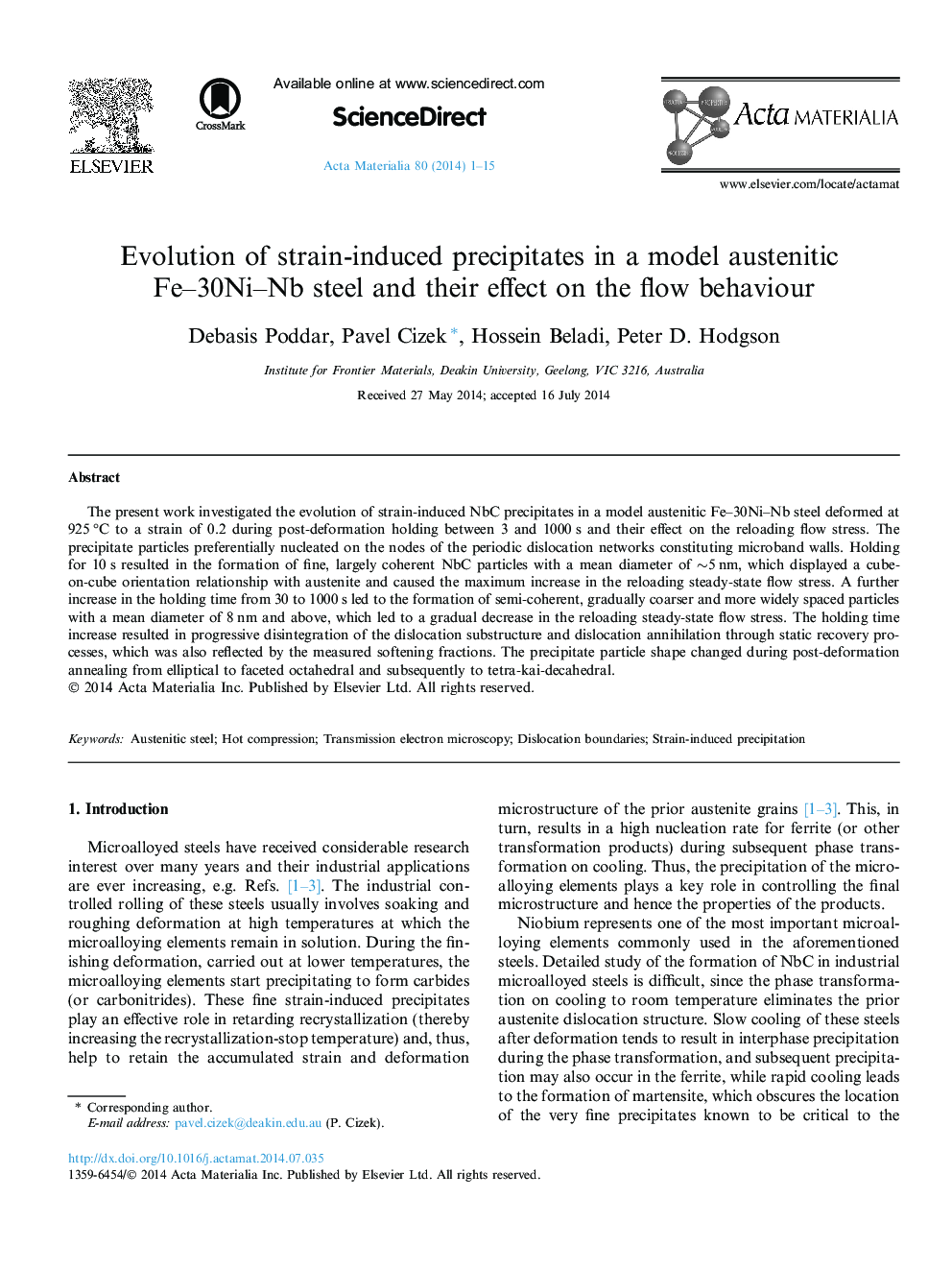| Article ID | Journal | Published Year | Pages | File Type |
|---|---|---|---|---|
| 7880967 | Acta Materialia | 2014 | 15 Pages |
Abstract
The present work investigated the evolution of strain-induced NbC precipitates in a model austenitic Fe-30Ni-Nb steel deformed at 925 °C to a strain of 0.2 during post-deformation holding between 3 and 1000 s and their effect on the reloading flow stress. The precipitate particles preferentially nucleated on the nodes of the periodic dislocation networks constituting microband walls. Holding for 10 s resulted in the formation of fine, largely coherent NbC particles with a mean diameter of â¼5 nm, which displayed a cube-on-cube orientation relationship with austenite and caused the maximum increase in the reloading steady-state flow stress. A further increase in the holding time from 30 to 1000 s led to the formation of semi-coherent, gradually coarser and more widely spaced particles with a mean diameter of 8 nm and above, which led to a gradual decrease in the reloading steady-state flow stress. The holding time increase resulted in progressive disintegration of the dislocation substructure and dislocation annihilation through static recovery processes, which was also reflected by the measured softening fractions. The precipitate particle shape changed during post-deformation annealing from elliptical to faceted octahedral and subsequently to tetra-kai-decahedral.
Keywords
Related Topics
Physical Sciences and Engineering
Materials Science
Ceramics and Composites
Authors
Debasis Poddar, Pavel Cizek, Hossein Beladi, Peter D. Hodgson,
